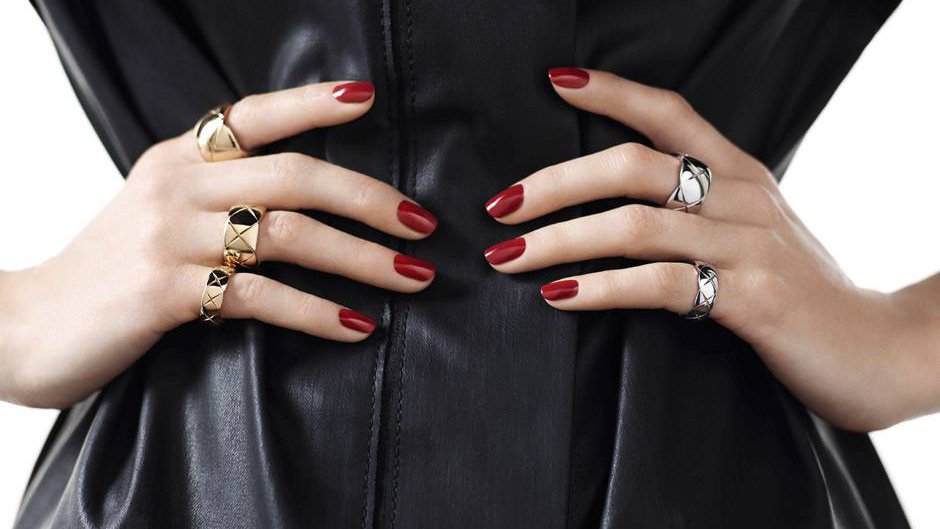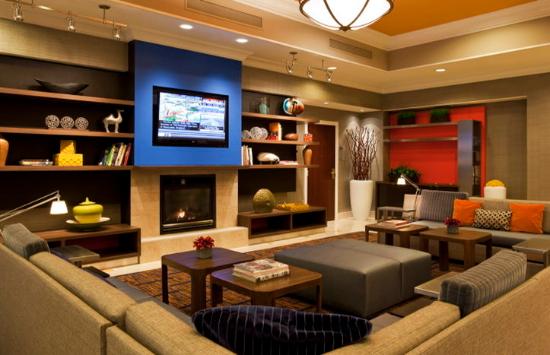In the second of a three-part series borne from the BHCVB Future of Luxury report, we investigate what has been dubbed ‘Luxury 2.0’ – the digitalization of exclusivity.

In the second of a three-part series borne from the BHCVB Future of Luxury report, we investigate what has been dubbed ‘Luxury 2.0’ – the digitalization of exclusivity.
In the second of a three-part series borne from the BHCVB Future of Luxury report, we investigate what has been dubbed ‘Luxury 2.0’ – the digitalization of exclusivity.
Last week, Luxury Society brought you the ‘The Top 11 Luxury Hubs Of UHNWIs’, listing the prime locations of wealthy consumers by population, what they are spending on and what’s next.
Collated as part of the Beverly Hills Conference and Visitors Bureau (BHCVB) global trend report on the ‘Future of Luxury’ – authored by trend forecaster, IN (K) – the statistics were part of a wider examination into the current landscape of the global luxury market, and here, we bring you another extract from its findings.
“ This era of luxury has been dubbed ‘Luxury 2.0’ – defined as the digitalization of exclusivity ”
In a turning of the tide, traditional luxury brands are increasingly and more confidently embracing new technologies and increasing their digital presence, enabling them to appeal to a wider and more digitally savvy luxury audience.
This era of luxury that we currently experiencing has been dubbed ‘Luxury 2.0’ – defined as the digitalization of exclusivity – and it is changing the market all luxury brands operate in.
Here, we case the trend and offer up a few extracts from the study which identify how some select forward-thinking luxury brands are forging the future.
“ Luxury players reach a tipping point where they see the value in launching full-scale shops around their brands ”
Tailoring Retail E-Commerce
Luxury e-commerce is projected to triple to $75 billion by 2025, with online taking an 18% share of total luxury sales, making the internet the third-largest market for luxury goods, after traditional retail channels in China and the US.
For luxury brands, a decision has to be made as to when to scale up. Once they begin to see sizeable revenues from internet sales – around 6% to 7% of total revenues – luxury players reach a tipping point where they see the value in launching full-scale shops based around their brands. These bigger, more complex websites require additional resources, including enhanced customer support and fulfilment logistics.
However, the luxury sector has been slow to incorporate technological developments such as e-commerce and social media, perhaps for fear of damaging brand exclusivity. According to Bain Consulting, 40% of luxury retailers were still not trading online in November 2014.

The Chanel x Net-A-Porter tie-up
But customers are driving change in the industry. Netsphere Strategies has found that 71% of customers cite the ability to view inventory information for in-store products as “important” or “very important,” and 50% expect to be able to buy online and pick up in-store.
Due to their penchant for traveling from city to city, many UHNWIs are time-poor and appreciate the convenience of being able to shop online. Therefore a balance must be struck.
Thus it is now the norm for brands to augment their retail presence with a similarly high-end online experience, creating an omnichannel customer journey.
“ Partnerships with like-minded e-tailers are a viable option for luxury brands to gently grow web presence while maintaining exclusivity ”
One way for brands to get around concerns of decreasing customer perceptions of exclusivity is limiting the variety of what is sold. Hermès, for example, sells its handbags online, but the Birkin and Kelly lines can only be bought in its boutiques.
Similarly, jewellers such as Van Cleef & Arpels keep some of their pieces offline. Chanel has been reticent for many years, but in April 2015 they launched a three-week fine jewellery capsule on Net-a-Porter.
Similar partnerships, with like-minded e-tailers such as Net-A-Porter, have been identified in the Future of Luxury report as a viable option for luxury brands to gently grow a luxury brand’s web presence while maintaining exclusivity.
“ Social media is where the next generation of UHNWIs seek out and evaluate what’s new and next in luxury ”
Social Fashion: A New Era
According to the White House Council of Economic Advisors: “Social media is where they [the next generation of UHNWIs] seek out and evaluate what’s new and next in luxury. Six out of ten 18 to 34 year-olds trawl sites such as Instagram and Pinterest to spot luxury trends compared to 10% of older luxury consumers”.
However, those comments aside – its clear to most working in the luxury sector that the next up-and-coming generation of wealthy, dubbed the ‘Millennials, wield an extraordinary amount of purchasing power, which is only going to increase.
Born between the early 1980s and the early 2000s, they represent the largest generation in the US, comprising roughly a third of the total population, according to the Future of Luxury report.

‘Art of the Trench’ by Burberry
In the US, Millennials wield about $1.3 trillion in annual buying power. Five out of six connect with companies on social media networks. Millennials are a technologically connected, socially diverse and more accepting generation. The priority that they place on creativity and innovation augurs well for future economic growth; to cite one example, the mobile phone application economy, worth $5.8 billion annually in the UK, shows this generation’s potential for opening up economic frontiers.
They are the first generation to have had access to the internet during their formative years, and are the most diverse generation to date, with one quarter speaking a language other than English. 89% of the 18 to 29 age group have an account on a social media site, compared to 62% of Baby Boomers (Pew Research Center, 2014). According to Nielson, over 85% of these Millennials own a smartphone, which they touch up to 45 times a day.
Interestingly, to date, the Millennials’ enthusiasm for social media has been successfully integrated into the world of luxury fashion.
“ In October 2015, Burberry became the first fashion brand to create a campaign exclusively for Snapchat users ”
In 2013, Oscar de la Renta debuted the brand’s fall campaign on Instagram, weeks before placing print advertisements in traditional channels such as Vogue, ELLE and Tatler.
Similarly, Burberry, which is becoming known for its inspired use of technology, launched its ‘Art of the Trench’ campaign in 2009, a solely digital initiative. When the brand’s store opened on Rodeo Drive, it shot a range of LA tastemakers for the campaign. Over time, customers too were able to submit photographs of themselves in their Burberry trench coats to an Art of the Trench website.
In October 2015, Burberry became the first fashion brand to create a campaign – shot by Mario Testino and Stephen Bailey – exclusively for Snapchat users (the picture-messaging platform claims 100 million daily engaged users). In 2014, Marc Jacobs launched a Tweet Shop in London, where goods were exchanged in return for social media use.
“ Hotels are moving fast to adapt their offerings for this generation’s technological expectations ”
The blurring between retail, online and social spaces to create a seamless customer journey continues.
Burberry’s London flagship in a former cinema is billed as “part event space, part innovation hub, part store.” Its sales staff use iPads to browse a customer’s purchase history, while its website offers the opportunity to use live chat or get a call from a customer sales representative.
The ‘Smart’ Adaptation Of Luxury Hotels
Luxury rooms changed little over the last century, but hotels are moving fast to adapt their offerings for this generation’s technological expectations.
Millennials live their lives through their smartphones and they are used to getting services tailored to their wants and needs through technology, and now – the previously staid hotel market is working fast to fulfill this.

Marriott’s high tech, high touch” concept
For example, for the London 2012 Summer Olympics, Samsung created app-controlled hotel TV, lighting and air conditioning, which the tech giant is continuing to develop for the hospitality industry.
Marriott International has developed a “high tech, high touch” environment, strategically elevating the customer service experience by including plenty of USB ports to charge mobile devices, large touchscreen displays in the lobby to help guests navigate the property, and a Marriott Guest Services app which can be used to check guests in and out, request more toiletries or schedule a wake-up call.
Another earlier adopter of “high tech, high touch” was Starwood Hotels & Resorts which was among the first to configure its app for the Apple Watch. The brand also pioneered keyless mobile room entry at its W Hotel properties in 2014.
“ The Peninsula group established an innovative & exclusive partnership with NET-A-PORTER.com ”
More recently, as depicted in Luxury Society’s review on The Future of Luxury Hotels, The Peninsula Paris ingeniously merged the aforementioned social media trend among Millennials, with their marketing strategy.
The group established an innovative and exclusive partnership with online luxury fashion retailer and publisher NET-A-PORTER.com in 2015, which saw the two collaborate to create a series of stylish mini guides to the world’s most dynamic gateway cities.
The exclusive style savvy bite-sized guides were published on the respective hotel’s section of The Peninsula website (peninsula.com), and featured in the travel section of NET-A-PORTER.com’s fashionable The Edit magazine (net-a-porter.com/peninsula) during the week of launch.
“ Starwood Hotels & Resorts Worldwide has joined the ranks with the launch of its high-tech design lab – Starlab ”
Starwood Hotels & Resorts Worldwide has, similarly, joined the ranks with the launch of its own high-tech design lab – Starlab – at its headquarters in Stamford, CT last year.
The company has gone on to become the first to offer keyless hotel room entry, allowing guests to check in via their iPhones (or Apple Watch), and the group began trialing a robotic bellhop , dubbed Botlr, across its Aloft hotels in Cupertino and Silicon Valley in August 2014.
For more on how hotels are adapting to the new digital age, go to Luxury Society’s feature: The Future of Luxury Hotels.
To further investigate the changing luxury landscape and the Millennial impact on Luxury Society, we invite you to explore the related materials as follows:
– Focus: The Top 11 Luxury Hubs Of UHNWIs
– Engaging With Digital Natives For Luxury
– 2016 Luxury Industry Predictions From The Experts










